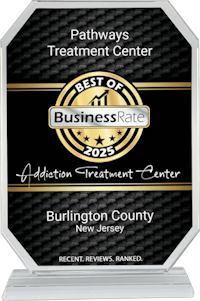Addiction can be a complex topic, and healing can be an unclear journey if you don’t know how to pursue it. The cycle of addiction is a dangerous sequence of actions that form a perpetual loop that fuels one’s addiction, which means it can be harder than ever to heal and build an addiction-free life. These dangerous, unproductive habits cannot be combated alone.
To break the cycle, you need to know all about the cycle of addiction, how to identify which phase you’re in, and how to reverse your addictive habits. The last step can best be managed with help from family, friends, and expertise from addiction specialists. But it also helps to undergo individual therapy and other specialized help for addiction. It may seem intimidating to seek help for addiction. But once you learn about the cycle of addiction, you may find yourself more motivated than ever to break it in yourself.
What is the Sequence of the Cycle of Addiction?
The different stages of the addiction cycle are precise, progressive steps that you ought to know if you’re looking to heal from addiction. Understanding each phase can help you identify your triggers or signals for each one (which can help you plan to work around avoiding them). With enough diligence and focus, you can master the cycle of addiction and learn to live outside of it.
The cycle of addiction always begins with the first use of an addictive substance. That’s why starting any drug is a dangerous choice. Depending on the drug itself, it could lead to dependency very quickly. The introduction of a new substance stimulates the body’s pleasure center, which can cause abnormal changes that lead to the other steps of the cycle of addiction.
What the user does from this stage often determines whether they will continue the cycle. It can also depend on the setting in which the drug is used — if the setting is among friends in social settings, this could lead to a very different level of addiction than if the drug has to be acquired or used in secret. If the drug produces what feels like a productive feeling, such as ease in social situations, this could also influence rates of future use of the substance.
Once the mind is exposed to foreign substances for the first time, a lingering mental craving (for the addictive or the effect that it causes) can give way to increased use. Initial exposure to these substances causes the brain to want more of this new foreign agent. This is partly because many addictive substances can flood the brain with feel-good chemicals like dopamine.
Normally, this occurs in the brain when someone does something good for their body. The body is trying to teach them that the action is good for the body. So naturally, things can become confused quickly when an addictive substance floods the brain with up to hundreds of times the amount of dopamine normally produced in the brain.
Increased use of an addictive substance gradually alters the genetic makeup of your brain’s structure, giving the addictive chemicals more of a role in overall functioning. This also applies to inherent aspects of substances, such as alcohol’s natural depressive aspects. Many people have trouble overcoming alcohol addiction because their bodies have become accustomed to functioning with the presence of alcohol, making detox potentially dangerous without medical supervision.
Over time, the body adapts to the increased use by developing a tolerance to the addictive chemical. This means as tolerance grows, the body requires higher dosages to achieve the same “high” effect. As tolerance levels increase, so can your use, which poses a significant danger of overdoses and death. Reaching this point in the addiction cycle is a certain sign that your body has become fully addicted.
At this point, your brain’s chemical structure has become so altered that it requires the addictive compound simply to function. Going too long without using the addictive symptoms will trigger withdrawal symptoms ranging from mild to severe. These short-term symptoms, which can last days, weeks, or months, can vary in severity. This is why many programs for addiction offer medication-assisted treatment to better support people in recovery, so withdrawal symptoms don’t hamper the healing process or tempt them to resume substance use.
Increased tolerance with chemical dependency means that a person officially has an addiction. But these two are not the only characteristics of addiction. These can include financial troubles, brushing off concerns expressed by others regarding their substance use, and a loss of interest in activities and hobbies that used to interest them. It may be at this point that a person starts to see the impact of the addiction on their life.
Many people who develop an addiction to a substance are aware of the issue, and have a desire to change (or at least lessen the impact the substance has on their life). The problem comes when they attempt to detox from the substance without advanced planning or knowledge of how the substance works in the body. Self-attempted detox without any medical assistance (or even advanced planning) can lead to severe withdrawal symptoms. Many people aren’t ready for the severe cravings or adverse cravings that come with withdrawal from a substance. What can result is extreme discomfort, or worse. Depending on the substance, withdrawals can cause cardiogenic shock or incite mental conditions like depression or anxiety.
For many, withdrawal symptoms can become too much to bear and they use their desired substance again to help alleviate withdrawal symptoms. This is the final and most discouraging phase in the addiction cycle, because it can take you right back to square one. Many people enter sober living after periods in addiction treatment because they don’t trust their own capacity to endure withdrawal symptoms outside of a controlled setting.
The relapse phase can make an addiction sufferer feel as if they’ve lost all hope, with no way out of their struggle. But there is always hope — it just takes time, knowledge of your triggers and reasons for use, and the willingness to build up skills to resist the urge to use addictive substances. Pathways treatment programs help prepare individuals for life after rehab to prevent relapse.
Do All Addictive Substances Follow the Same Cycle?
Yes. All addictive substances, from marijuana to heroin, follow the same cycle of addiction. Therefore nobody is exempt from any phase of the addictive process. Everyone who indulges in drug or alcohol abuse is at risk of falling into this dangerous cycle. That means no matter the substance, no matter the frequency, and no matter the age, anyone can fall prey to addiction.
How to Break Your Addiction Cycle
It doesn’t make a difference what substance has caused a person’s addiction. It still takes time and diligence to break the cycle of addiction. But there is also always hope for relief and recovery no matter how many times someone has succumbed to the cycle.
Possessing an inherent desire to make a change in your life is one of the primary factors of every successful recovery. When it comes to rehab, being willing to change and accept those changes will be your guiding light to excelling at every level of rehab. Remind yourself of why you want to become sober, and give yourself incentives for day of sobriety or completing steps to enter recovery.
Professional treatment is a necessity for someone who wants targeted help escaping the cycle of addiction. The start of every successful recovery begins with getting the appropriate help you need for independently sustainable sobriety. This could mean admitting your addiction to your support system, entering individual therapy, or admitting yourself into a partial hospitalization program (PHP) to ensure you have support during detox.
In many cases, medication-based treatment is the only way to properly recover from addiction without causing serious mental or physical damage. In any case, it’s important to not enter into a life of sobriety with no plan of how you’ll cope with cravings.
If you take part in an addiction program and achieve your first sobriety milestones, that doesn’t mark the end of recovery. Consider transitioning to an outpatient program to keep building your skills and transition gradually into a fully sober life.

Pathways Recovery Center Can Help You Heal from Addiction

At Pathways Recovery, we work to ensure individuals have everything they need to ensure their path to recovery. We have services available for various levels of addiction. Our team will work with individuals to design a targeted rehabilitation plan to help them achieve sobriety. Connect with us now to begin your journey toward a happier, healthier life free from addiction.



